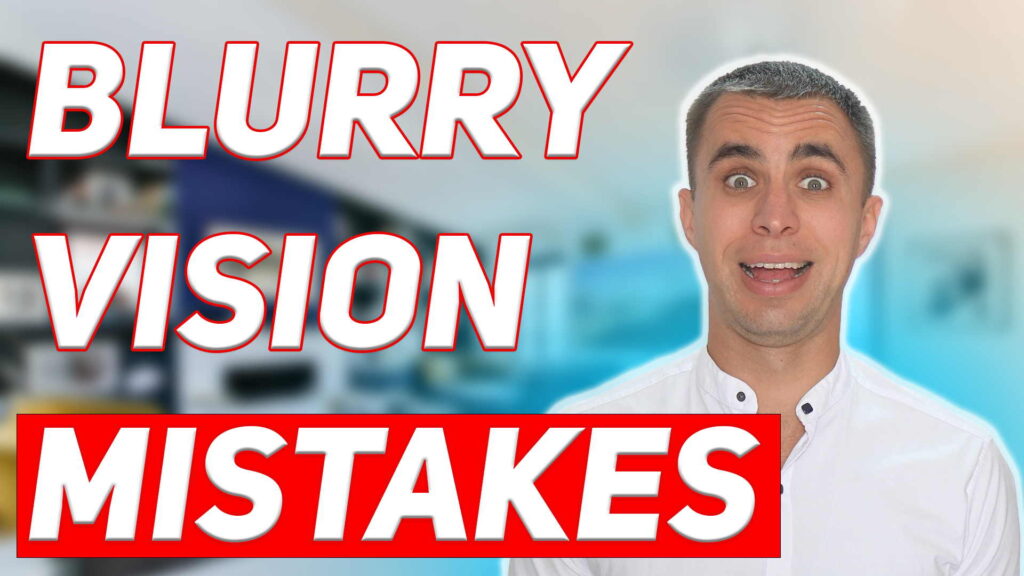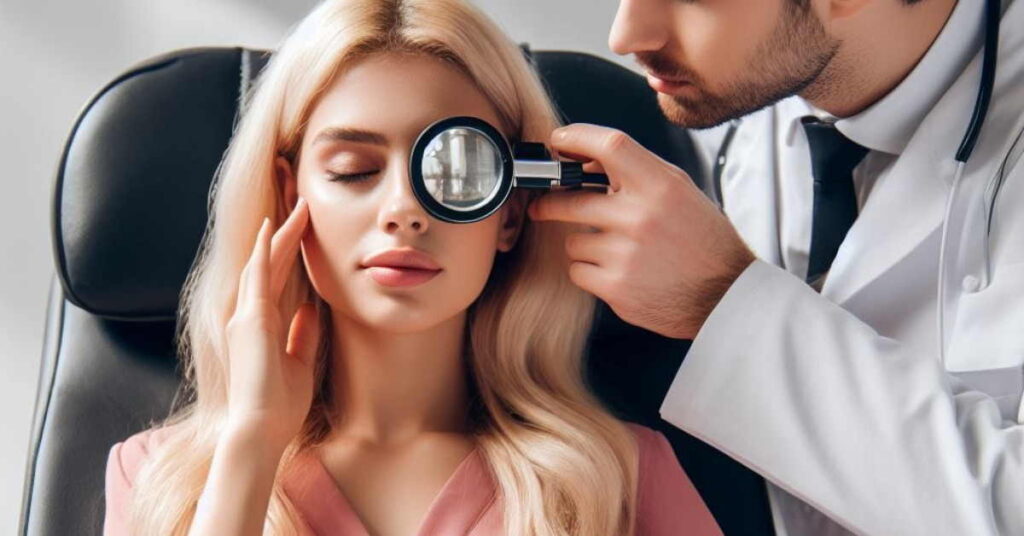The main 3 mistakes are when you try to see something without spectacles. One of the most instinctive reactions to blurry vision is squinting. While squinting can indeed make objects appear slightly clearer, it’s not a sustainable or healthy solution.
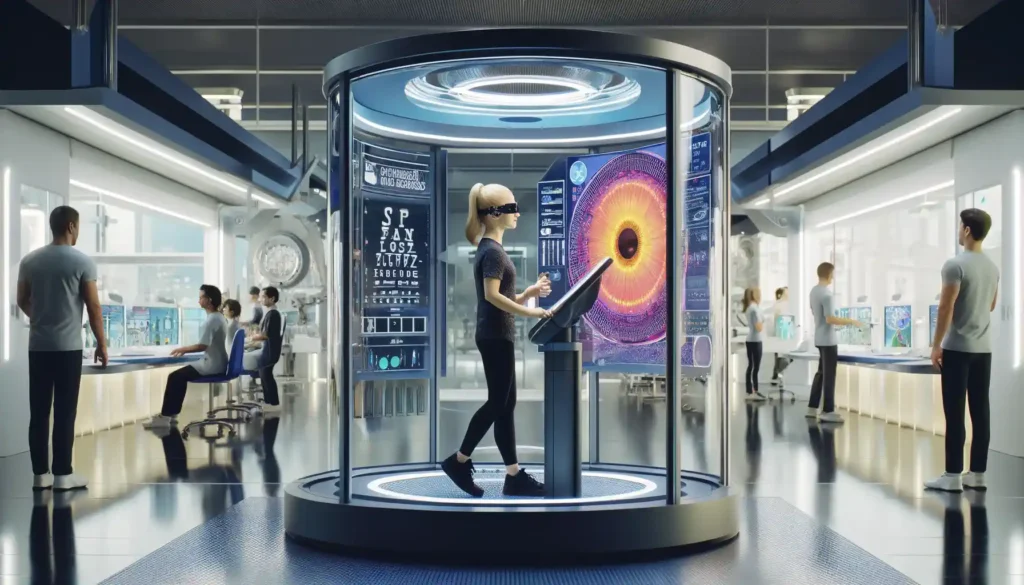
Try to avoid squinting
Very often, people with nearsightedness, when trying to see without spectacles, strain their eyelids, or in other words, squinting their eyes. This is a bad habit of poor vision.
Squinting temporarily changes the shape of your eye, effectively acting as a makeshift lens, but this can strain your eye muscles and lead to eye fatigue and discomfort over time. Moreover, it does not correct the underlying vision issue.
Solution: Instead of squinting, take a moment to relax your eye muscles. Blink a few times to moisten your eyes and prevent them from drying out. Gently massage your temples and forehead to relieve any tension. If possible, find a well-lit area to improve visibility.
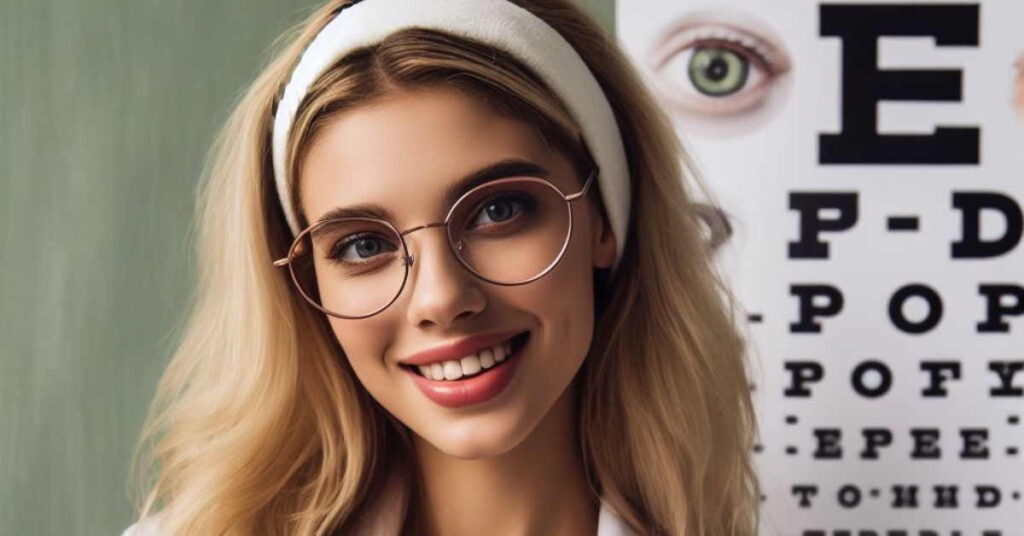
How eyes can see better without spectacles
Our eyes can see well and focus well only if our eyes and eyelids are relaxed. Under pressure eye, muscles cannot relax to adjust focus to a different distance or different object. Myopia in other words called a spasm of accommodation. Eye muscles are stuck in one position and cannot relax to adjust eye focus. It’s like for example bending a hand with a dumble and holding it for 1 hour until the muscle gets spasmodic and cannot relax.
Remember, it’s important to prioritize your eye health and not overstrain your eyes.
Rare Blinking mistake
3rd mistake mistakes when you try to see without spectacles is rare blinking which causes tiredness of the eyes of the retina. Dry eye syndrome can appear without blinking. Soft blinking every second is one of the most important ways to improve vision and eye health.
Eyesight improvement Course Eyesight Academy to eliminate Spectacles
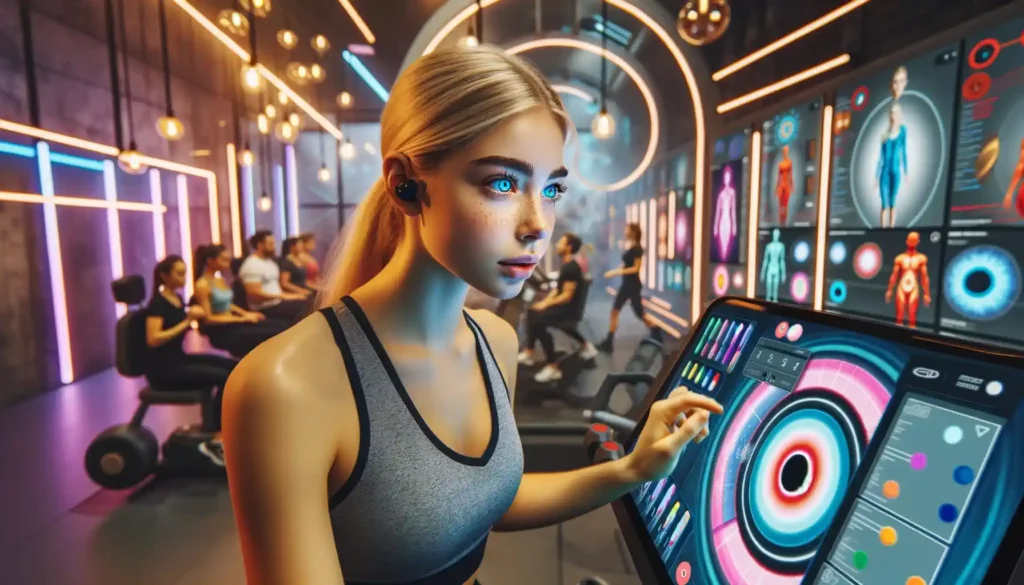
Unlock Clear Vision: Introducing the Eyesight Improvement Course by Eyesight Academy. Do you dream of the freedom that comes with a clear, natural vision? Look no further – the Eyesight Improvement Course Eyesight Academy is here to help you break free from the shackles of your eyewear and experience a life of visual clarity like never before!
Top 3 tips to get rid of spectacles Naturally
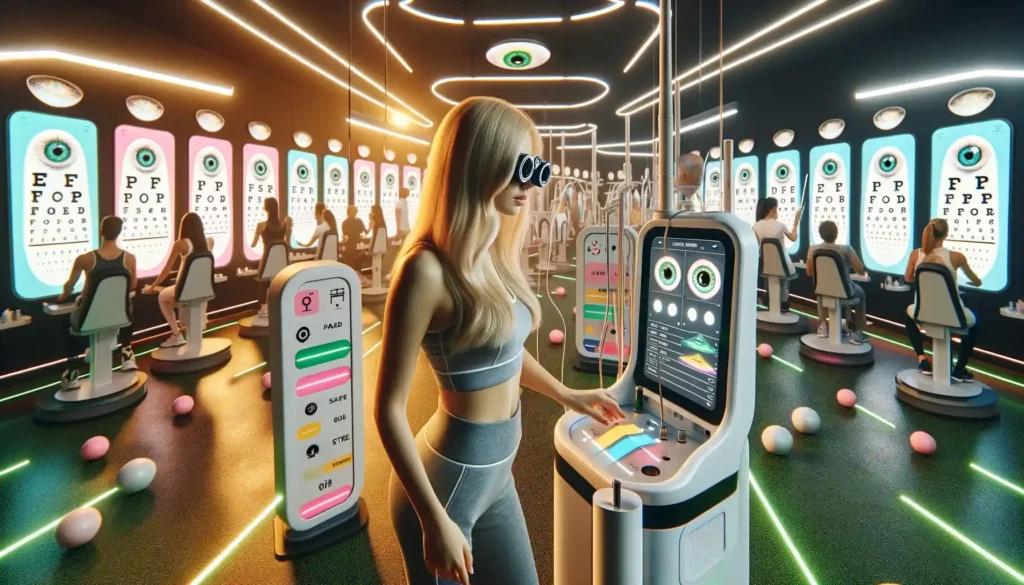
1) Just give your eyes a little rest to reduce the spasm of accommodation. At least every minute, close your eyes for a few seconds and feel how your eye muscles relax and relieve strain from your eyeballs.
2 Do not strain your eyelids when trying to see something. Don’t squint your eyes. It is ok if something is a little blurry. Blink a few times and come closer to see it.
3 Learn how to blink softly, and every second it will help your eyes to recover, to relieve eye strain. Blinking is the most important exercise to learn to improve vision naturally. It is very easy and you can do it everywhere
Motivating to Improve Eyesight Naturally: Beyond Glasses and Contact Lenses
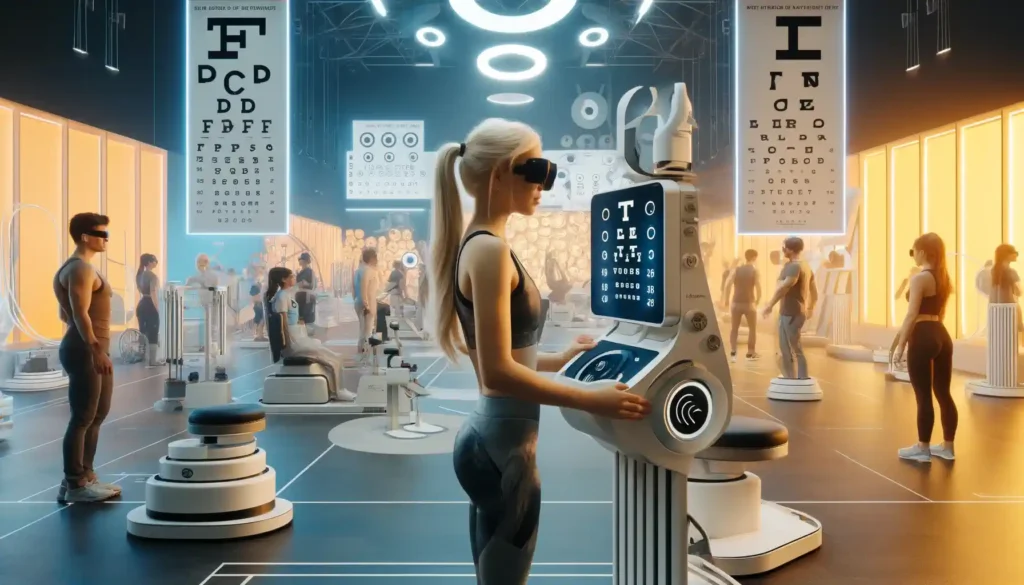
In the journey towards natural vision improvement, it’s essential to challenge the conventional reliance on glasses and contact lenses. Often perceived as immediate solutions, these visual aids are, in reality, temporary fixes that may inadvertently contribute to the decline of our eyesight over time. The real quest lies in addressing and rectifying the root causes of visual impairment, which typically stem from improper eye care, poor nutrition, excessive strain, and the habitual focus on close-range objects.
The Pitfalls of Abandonment of Visual Aids
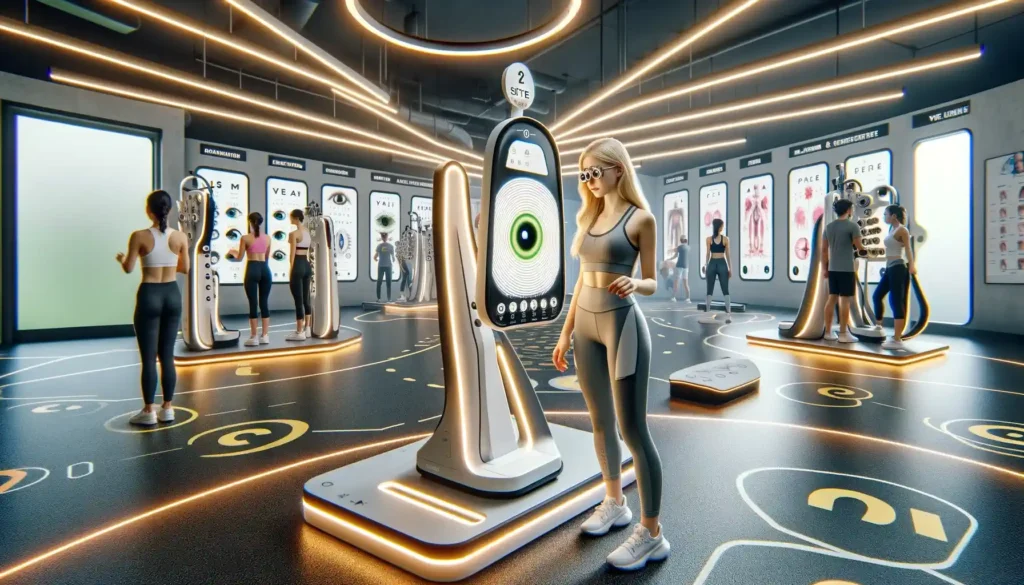
The enthusiasm to discard glasses at the onset of eyesight training can be tempting, as was the case with Mantak Chia, a proponent of natural vision improvement. However, this eagerness can backfire, leading to increased eye and brain fatigue. This approach, rather than hastening the improvement of vision, may prolong the process significantly. The key lesson from Mantak Chia’s experience is the importance of patience and gradual transition. Glasses should not be abandoned hastily but instead used as a supportive measure while undergoing a program designed to naturally enhance visual acuity.
A Gradual Shift Towards Natural Vision
The journey towards eliminating the need for glasses or contact lenses is gradual. Initiating the process by intermittently removing glasses for short periods during the day allows the eyes to slowly adapt to their natural capabilities. It’s advisable to consult a healthcare professional to adjust the prescription to weaker lenses progressively, in tandem with the improvement in vision. This stepwise reduction in dependency on corrective lenses encourages the eyes to strengthen and adjust, reducing the risk of harm.
When visual acuity reaches specific milestones, such as 6/15 (20-50), it becomes safer to consider reducing the use of glasses for certain activities, with the exception of tasks that require optimal vision, like driving. Achieving a visual acuity of 6/9 (20-30) or better may signify the possibility of living free from glasses. For those who are farsighted, starting with the weakest lenses that still allow for clear reading, and gradually decreasing the lens strength, can pave the way towards natural sight without the crutch of corrective lenses.
Conclusion
The path to improving eyesight naturally is paved with patience, understanding, and a methodical approach to reducing reliance on glasses and contact lenses. By addressing the underlying causes of visual impairment and following a carefully structured program, as highlighted by the experiences of individuals like Mantak Chia, it’s possible to regain natural vision. It’s crucial, however, to proceed with caution and under professional guidance to ensure that the journey enhances visual health without inadvertently causing harm.
- How to Manage Astigmatism Naturally: A Comprehensive Guide
- How to get rid of under-eye bags Naturally? Top 10 Strategies for a Refreshed Look
- 5 Best Foods to Get Better Eye Health and Vision
- Top 10 Essential Facts You Need to Know About Eye Floaters
- How to UPGRADE EYESIGHT with Specialized eye Training

